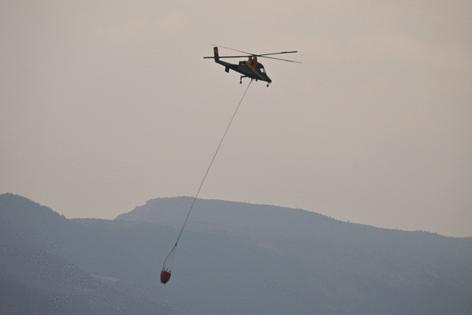Colorado wildfires: State's worst fire season since 2020 sees 218,000 acres scorched
Published in News & Features
DENVER — Wildfires that sparked across Colorado this year — whether by lightning or abandoned campfires — have together scorched more acres than the past four years combined, marking the worst wildfire season in the state since 2020.
While this year’s not-yet-complete fire season already dwarfs that of recent years, it’s come nowhere close to the destruction of the 2020 wildfires, said Camille Stevens-Rumann, an associate professor who studies wildfires at Colorado State University.
The dozens of large wildfires that sent up smoke across Colorado in 2020 consumed roughly 677,520 acres and destroyed more than 1,000 buildings, according to a National Interagency Fire Center annual report for the Rocky Mountain region.
Three 2020 fires — the Cameron Peak, East Troublesome and Pine Gulch fires — are Colorado’s three largest on record, according to the state’s Division of Fire Prevention and Control. Another two, the Grizzly Creek and Logan fires, also rank in the state’s top 20.
So far this year, nearly two dozen large wildfires have charred roughly 218,000 acres in Colorado, mostly on the Western Slope. The flames have destroyed at least 66 buildings, including 14 homes and 52 other structures, according to the Rocky Mountain Area Coordination Center.
That’s more than the acres burned each year from 2021 to 2024 combined, according to data from the center’s annual reports. More buildings have also been destroyed this year than in each of the years during that time frame.
The below-average snowpack and lack of rain fueled extreme drought across western Colorado this year, allowing fires that sparked to spread rapidly, Stevens-Rumann said.
Fire behavior analysts previously said the Western Slope’s drought put brush and other vegetation in the area into dormant, winter-like states, making it easier to burn.
Increased snowpack, especially later snow into the spring and summer, limits the fuels available for fires to burn, Stevens-Rumann said.
“You might still have the light, flashy fuels like grass ready to burn, but … if the trees are still holding water, it limits the fire’s spread,” she said.
The Lee fire, which is burning on 137,758 acres between Meeker and Rifle, started in Rio Blanco County on Aug. 2 before exploding in size throughout the following weeks. At one point, the flames raced across 8 miles in a single day. It is now the fifth-largest wildfire ever recorded in Colorado, according to state fire records.
The fire season was also worsened by a late and sporadic monsoon season, said Nikolai Balashov, a meteorologist for the Rocky Mountain Area Coordination Center.
“That allowed the drought to start escalating through late May, June and July,” Balashov said. He said the storms weren’t wet enough to produce rain, but they were strong enough to create lightning, which sparked most of the fires on Colorado’s Western Slope this year.
The Lee and Elk fires west and east of Meeker, the Derby fire in Eagle County, the South Rim fire in Black Canyon of the Gunnison National Park, the Sowbelly fire in in the Dominguez Canyon Wilderness Area, the Turner Gulch and Wright Draw fires on opposite sides of Unaweep Canyon and the Stoner Mesa fire in San Juan National Forest were all started by lightning this year, according to incident reports.
Each of those fires has burned thousands of acres. Lightning sparked many more incidents across the state that firefighters were able to contain to a few hundred acres or less.
“And we’re still in the heart of our core fire season,” Rocky Mountain Area Coordination Center manager Travis Hartsburg said. It’s very likely more fires will start across the state before the main fire season ends in October, though how big they’ll grow remains to be seen, he said.
Wildfires in Colorado have increased in both frequency and size over the last 30 years, but especially in the past decade, according to a recent report from Colorado State University’s Regional Economic Development Institute.
Colorado has fire potential year-round, but the main fire season is June through October. The state’s fire season has grown by more than 70 days since the 1970s, and the danger is only continuing to grow, Stevens-Rumann said.
--------------
©2025 MediaNews Group, Inc. Visit at denverpost.com. Distributed by Tribune Content Agency, LLC.







Comments